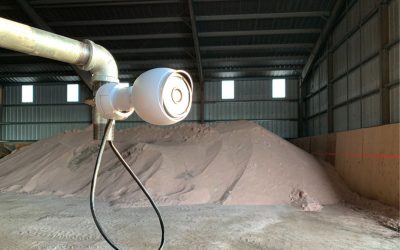Automation kills operator skills
Early proponents claimed that automation would reduce manpower in the mill, and product consistency would improve. As our industry has aggressively adopted automation, I question the total value proposition.
Recently, I had the opportunity to spend some time on my father’s farm in Western Kansas. As we were touring his wheat fields, we stopped and looked at his irrigation system.
Richard had recently installed a new irrigation system, and one of the options was to incorporate automation so that he could control essentially every function of the irrigation system from his computer at home.
Richard had passed on this option, as he could not justify the additional expense. In addition, he felt that automation would distance him from the daily management of his crops.
Driving home, a question formed in my mind: what exactly have we received from automation in the feed industry?
Reducing manpower
Early proponents claimed that automation would reduce manpower in the mill, and product consistency would improve. These were reasonable expectations, as many of us examined other industries and saw these same benefits.
As our industry has aggressively adopted automation, I question the total value proposition.
Automation has made our lives easier, and yes, the consistency of the process has improved. However, I question whether we have been able to reduce manpower in the mill, and I would also propose that product quality has been impacted in a negative fashion.
Operator exit
One of the downsides of automation has been the forced removal of the operator from the process.
Ten years ago, it was commonplace for operators to be intimately involved with equipment such as pellet mills. Operators would adjust roll gaps, visually inspect pellets coming off the machine, and manually adjust conditioning temperature and feed rate.
The net result was a group of people that understood the pelleting process and could visually observe the impact changes in the process imparted to the final product.
Desk bound
Today, most operators are desk bound behind a computer terminal, and control the process through a pre-defined set of criteria.
For example, line managers want a conditioning temperature of 180°F, and maximum production rate. As a result, the operator sets the system to achieve the desired conditioning temperature and pelleting rate, and they rarely leave the confines of the production office to visually inspect the process.
As a result, pellets are produced with minimal attention to durability, and the rolls are adjusted to achieve maximum production rate, regardless of the damage to the rolls and dies.
What does automation bring?
Is automation a good thing? I suppose that depends on your perspective. I personally don’t see the reduction in manpower in the mill; instead, I see the same number of employees, being removed from the intimacies of the process.
While process consistency has improved, I see accelerated wear on rolls and dies, arbitrary conditioning temperatures and a significant reduction in pellet quality industry wide.
Is automation a good thing? After ten years, I would suggest we need to rethink the value proposition.











